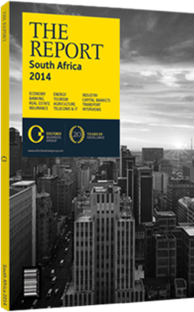Mobile financial services provide a new growth platform
Following the success in Kenya of Safaricom’s M-Pesa programme, a mobile money scheme that now handles roughly 10% of Kenya’s GDP on an annual basis, mobile financial services have become increasingly popular in Africa. Though the results have been mixed, the fundamentals of the mobile phone as a financial tool are sound. In South Africa, mobile penetration is in excess of 100% compared to a financial inclusion rate of below 70%. Crucially for a country that is looking to deepen financial inclusion, mobile banking provides a useful tool for the lower-income segments of society to increase financial literacy, even if their means are limited.
Electronic Access
South Africa has seen some steady growth in terms of electronic transactions. Internet banking penetration has gone up from 7% to 11% between 2012 and 2013, reported Johannesburg-based organisation FinScope. Meanwhile, mobile banking penetration increased from 25% to 28%. However, the study found that most users are still performing very basic features with mobile banking – 84% use it to buy airtime and 54% check bank balances, while only 15% of mobile banking users pay bills with mobile apps and 12% transfer money. The Mobility 2014 research study conducted by South African technology research and strategy organisation World Wide Worx with South African bank First National Bank (FNB) found that consumer interest in mobile banking has been growing. Their study found that the population using mobile apps for banking went up from 1% in 2012 to 9% in 2013. According to Jacques Celliers, CEO of FNB, “Mobile as a distribution channel is playing a big role in increasing access, especially as a remittance tool, but the challenge is the transition from mobile money to full banking services – customers tend to struggle with that.” FNB, advisor of FirstRand, was the first to offer a mobile banking app to its customers in 2011, followed by Standard Bank and Nedbank in 2012 and Absa in 2013.
In August 2014 Vodacom announced the relaunch of mobile money service M-Pesa in South Africa. Vodacom is partnering with Bidvest Bank and Visa, and will include a debit card so that customers can access 27,000 ATMs in addition to 240,000 merchant outlets. Vodacom’s first attempt in South Africa in 2010 saw an initial signup of 1m customers within a few months, but customer growth and transactions then flattened. As a result, the mobile operator has reduced paperwork and fees, and rolled out an agency-distribution model in the hopes of stoking further growth.
From a bank’s perspective, the advantages of mobile banking are myriad, but above all, mobile devices allow them to access new customers and locations with lower costs than brick-and-mortar branches. According to FinScope, 2.6m of the 5.7m financially excluded people live in remote tribal areas. Given the inefficiencies associated with setting up branches in some areas, financial services are being offered by unconventional players, from shops to mobile providers. According to Johannes Grosskopf, banking industry leader at PwC South Africa, banks are focusing on reducing unit costs to clients. “There is a big wave of new electronic channels and mobile platforms,” he told OBG. “Even in branches, interaction with customers is changing as greater focus is being placed on technology through self-service touchpoints.” However, the Mobility study found that most South Africans still access their bank accounts through ATMs and branch visits.
New Platforms
Other forms of financial services are being rolled out through mobile phones. Mobile provider MTN and retailer Pick n Pay have launched a programme offering a SIM card with voice and data, as well as the chance to earn points through the Pick n Pay loyalty programme. Deposits and withdrawals can be made at supermarkets. There is a one-off R29 ($2.75) fee, but then there are no transaction charges or monthly fees if customers shop at Pick n Pay and its sister company Boxer. Each day, customers can store up to R25,000 ($2367) and transfer up to R1000 ($94.70). Grosskopf said this sort of partnership creates a kind of stickiness that encourages customers to continue shopping with the network and retailer in order to reduce fees.
You have reached the limit of premium articles you can view for free.
Choose from the options below to purchase print or digital editions of our Reports. You can also purchase a website subscription giving you unlimited access to all of our Reports online for 12 months.
If you have already purchased this Report or have a website subscription, please login to continue.

